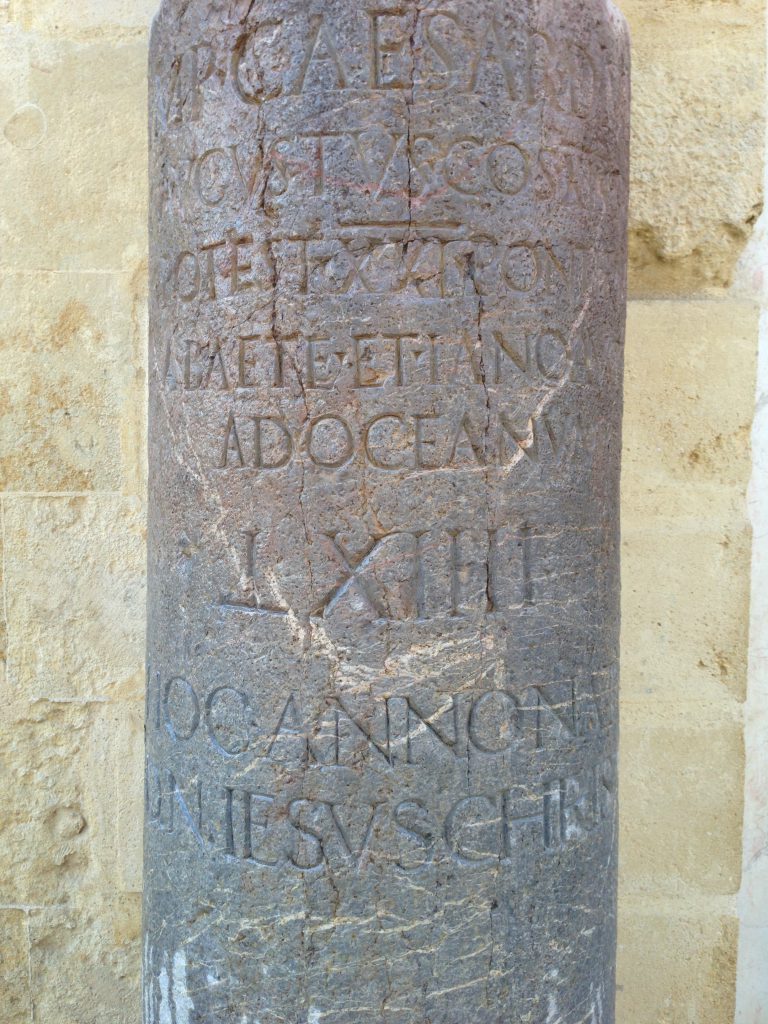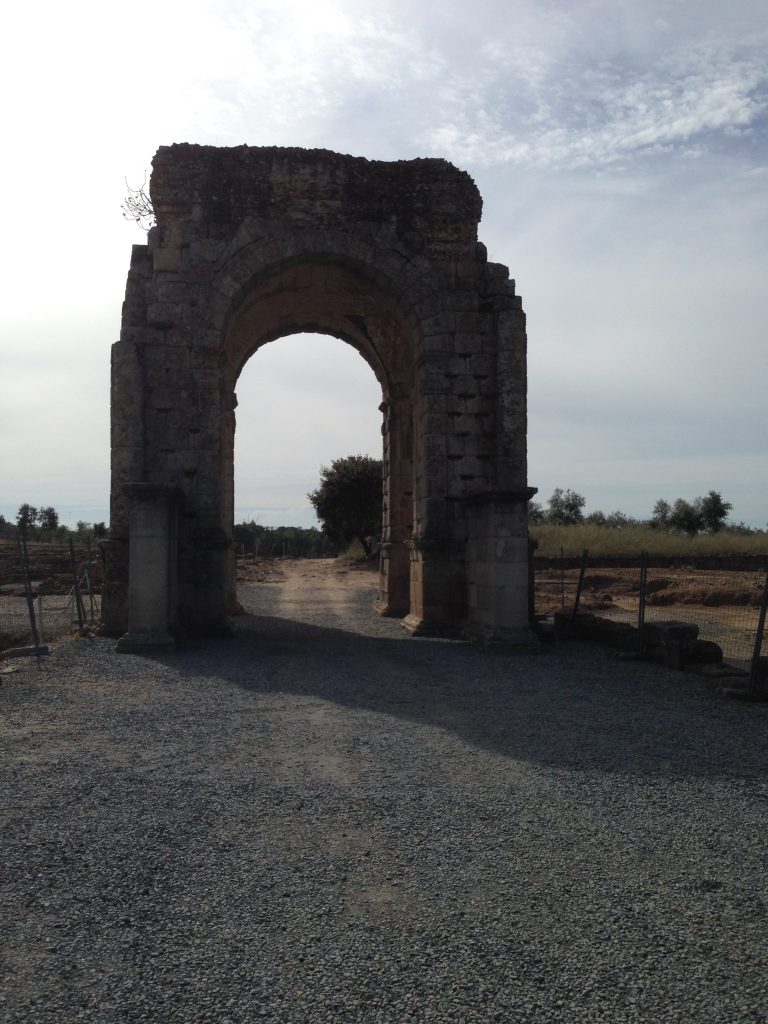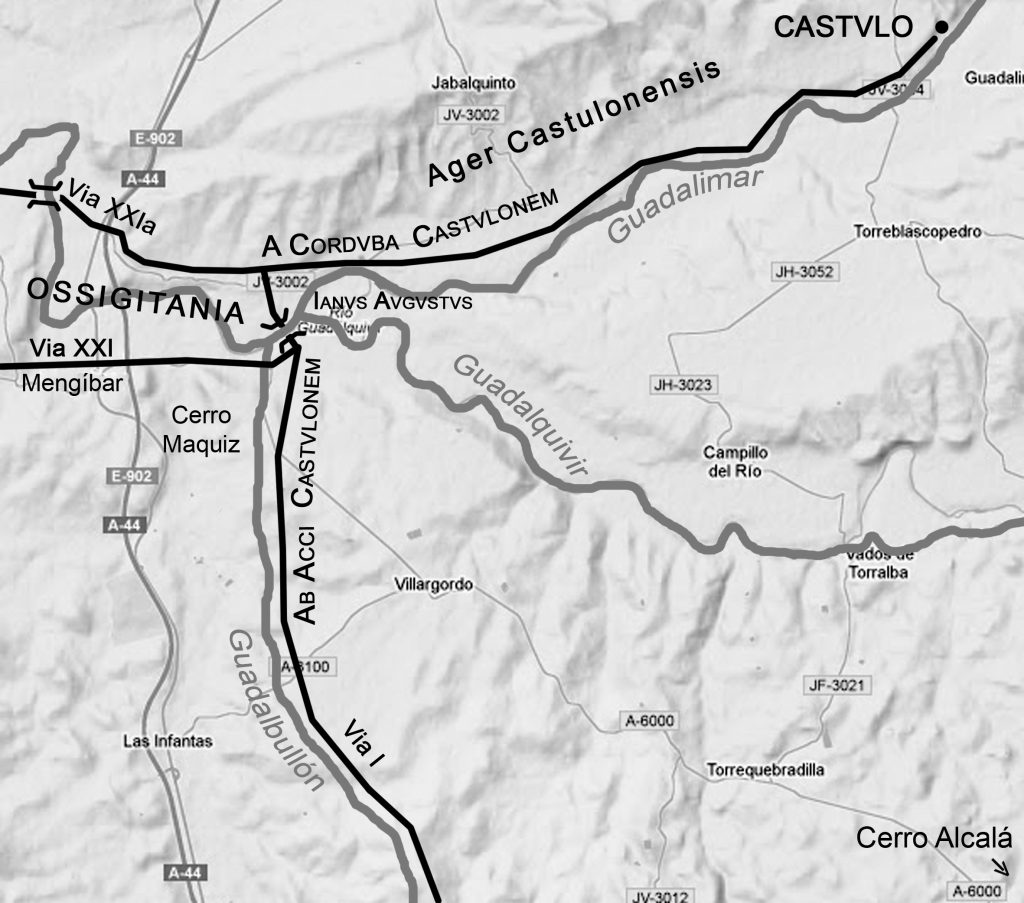It has always been an archaeologist’s dream to discover cities or monuments that have disappeared and whose existence we know only through literary, numismatic or epigraphic evidence.
One of these monuments is the so-called Janus Augustus, known only from inscriptions. Until recently, efforts have been made to localize it; and an archaeological team from the University of Jaén now believes to have found the foundations of this Janus a few miles north of Mengíbar. I will abstain from commenting on this and would prefer to listen to the sources that give us a fairly accurate picture of the border zone between the provinces of Baeticaand Tarraconensis, in which the Janus Augustus once stood.
Further reading on recent research of archaeologists from the Univ. of Jaén:
https://elpais.com/cultura/2018/05/23/actualidad/1527075997_311298.html

According to the milestones from the province of Baetica in southern Spain, that impressive monument stood at the gateway to this province, by the river Baetis (Guadalquivir), which also gave the province its name. It is the starting point of the via Augusta , which led from this Janus across the province to Gades (Cádiz) at the Atlantic Ocean: a Baete et Iano Augusto ad Oceanum – “from the Baetis and the Janus Augustus to the Ocean” (Corpus Inscriptionum Latinarum II 4709-4712; 4715) – the milestones indicating the distances from this starting point, the caput viae Augustae. Another milestone specifies this point as the entrance to the province of Baetica: ab arcu, unde incipit Baetica – “from the arch where the Baetica begins” (CIL II 4721).

The Janus or arch, probably a quadrifrons just like the Janus in Rome and comparable in shape to the Roman arch of Cáparra (Extremadura, Spain), was located at the river itself, at the beginning of the Via Augusta and at the entrance to the province. Pliny the Elder does not mention this arch, but in his geography of Hispania he does refer to the point at which the river Baetis enters the province of Baetica – i.e. he indicates exactly the point at which the Janus stood:
(Baetis flumen) modicus primo, sed multorum fluminum capax, quibus ipse famam aquasque aufert. Baeticae primum ab Ossigitania infusus, amoeno blandus alveo, crebris dextra laevaque accolitur oppidis.
“At first (the Baetis) is rather modest, but ready to take in many rivers, from which the river itself abducts name and water. And as soon as it has entered the Baeticafrom the Ossigiarea, it appears friendly through its lovely river bed and is bordered on the right and left by numerous cities.“
Pliny, Naturalis historia 3, 9.
At the borderline, right at the narrows between the hills of Mengíbar and Jabalquinto (see the map), the Baetis, previously amplified by the influx of the rivers Guadalimar and Guadalbullón, gushes forth into the province of Baetica (infusus according to Pliny), and then in a lovely course flows through this province – Pliny says it in almost poetic words: amoeno blandus alveo. From here on, the river Baetis is skirted by numerous cities left and right, crebris dextra laevaque accolitur oppidis, which Pliny later calls by name: Ossigi, Iliturgi, Ipra, Isturgi, Ucia and so on (Pliny, Naturalis historia 3,10) – these are the first cities of the province of Baetica.

There is only one topographically significant point in the area of Mengíbar which is suitable for an outstanding Augustan monument like this: The Janus Augustus must have been located at the confluence of the Guadalbullón, the border river between the provinces, and the Baetis, exactly where two Augustan roads once met. It is thus fulfilling the actual purpose of such a Quadrifrons, which marks the intersection of two streets: the road of the province of Tarraconensis, leading from Cartagena (Carthago Nova) at the Mediterranean Sea to the prosperous mining town of Castulo on the one side, and the Via Augusta of the Baetica leading to the West.
An Arabic source from the 10th century mentions the remnants of a large building called Al-Haniya – “the arch” precisely at the river Guadalbullón (Arab. wadi Bulyun) on the road to Castulo (Arab. Qastuluna). It is commonly seen as a Roman building that once stood here. Another proof for the location of the Janus Augustus.
Bibl.: M. G. Schmidt, Ab Iano Augusto ad Oceanum. Methodologische Überlegungen zur Erforschung der viae publicae in der Baetica, in: I. Czeguhn al. (ed.), Wasser – Wege – Wissen auf der iberischen Halbinsel, Berliner Schriften zur Rechtsgeschichte 9, Baden-Baden 2018, 35-53.